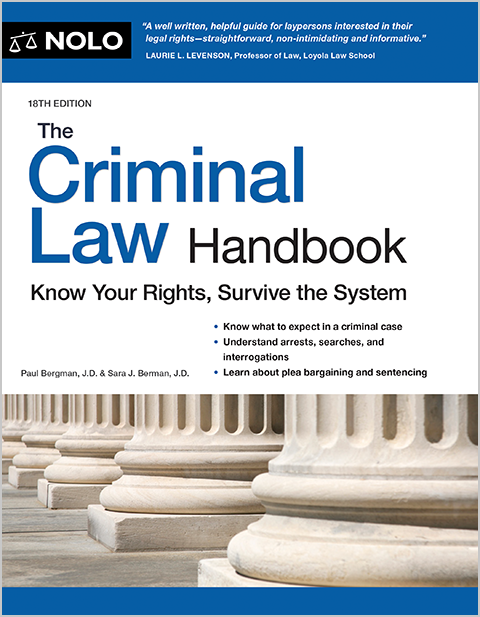Find out how people with severe agoraphobia can qualify for disability benefits like SSDI and SSI.
Agoraphobia is a type of anxiety disorder characterized by an extreme fear of public places or crowds. People with the disorder may have difficulty with everyday tasks such as grocery shopping or completing other chores that involve interaction with strangers. In very severe cases of agoraphobia, you might not be able to leave your own house without experiencing a panic attack.
Panic attacks are sudden, intense episodes of terror or dread even when no danger is present. They can also manifest in physical symptoms, such as shortness of breath, racing heartbeat, sweating, trembling, and feeling lightheaded. According to the National Institute of Mental Health, an estimated 1.3% of American adults experience agoraphobia at some point in their lives.
- Is Agoraphobia a Disability?
- Getting Disability for Agoraphobia by Meeting a Listing
- Getting Disability When Agoraphobia Keeps You From Doing Any Job
- What Medical Evidence of Agoraphobia Do I Need to Qualify for Disability?
- What's the Agoraphobia Disability Check Amount?
- Getting Legal Help for Your Disability Claim
Is Agoraphobia a Disability?
The Social Security Administration (SSA) awards disability benefits to people with a physical or mental impairment that prevents them from working full-time for at least one year. The agency will review your medical records for evidence of agoraphobia symptoms that may satisfy the requirements of a listed impairment or otherwise cause functional limitations in your ability to work.
Getting Disability for Agoraphobia by Meeting a Listing
The SSA maintains a list of conditions that the agency considers to be potentially automatically disabling. If you've been diagnosed with a disorder on the "listing of impairments," and you have evidence of specific symptoms and limitations in your medical records showing that the disorder is especially severe, you can get benefits without needing to prove that you can't do any jobs.
Qualifying for disability in this manner is known as "meeting a listing." People with agoraphobia may meet listing 12.06, for anxiety and obsessive-compulsive disorders, if they can provide medical documentation of the following symptoms:
- panic attacks followed by a persistent concern or worry about the consequences of having additional panic attacks in the future, or
- increased fear or anxiety about being in at least two different situations (for example, being in a public place, being in a crowded area, taking the bus, waiting in line, and being outside of your home).
Additionally, to meet the listing, you'll need to show that your symptoms cause an "extreme" limitation in one, or "marked" limitations in two, of the functional areas below:
- managing or adapting oneself (regulating your emotions, controlling your behavior, and adapting to change)
- interacting with others (using socially appropriate behaviors)
- concentrating and persisting at tasks (being able to complete tasks), and
- understanding and remembering information (being able to understand instructions, learn new things, or apply new knowledge to tasks).
"Extreme" limitations are more intense than "marked" limitations. For example, somebody whose agoraphobia causes an extreme limitation in interacting with others may be completely unable to leave their house by themselves, while somebody with a marked limitation in that same area may be able to leave their house, but only at times when they can be reasonably certain of avoiding other people.
If your limitations are milder only because you're keeping your symptoms under control in a "highly structured setting," such as a group home, you can still qualify for benefits under listing 12.06—provided you still have significant difficulty adapting to changes in your environment at least two years after you were diagnosed with agoraphobia.
Getting Disability When Agoraphobia Keeps You From Doing Any Job
Even if you don't meet the requirements of listing 12.06, you can still qualify for disability benefits if you have a residual functional capacity (RFC) that rules out all jobs. Your RFC is a set of restrictions that reflect which tasks you can perform at work and which tasks you should avoid.
A typical RFC for somebody with agoraphobia will almost certainly include a limitation, and perhaps even a prohibition, against working with the general public. Other possible areas where somebody with agoraphobia may have limitations include:
- maintaining attendance
- handling stressful situations
- interacting appropriately, if at all, with coworkers and supervisors
- following simple, detailed, or complex instructions, and
- maintaining concentration, holding attention, and keeping pace.
The more severe your symptoms are, the more restrictive your RFC will be—and the more likely you'll qualify for benefits because you can't work. For example, somebody with a milder case of agoraphobia may not be able to do work with a lot of public contact (a key component of many retail or service industry jobs), but would be fine in a more "object-focused" job, such as small parts assembly. But somebody with more intense feelings of anxiety and fear may spend so much time "off-task" that they aren't able to concentrate on completing even basic assembly tasks.
Social Security is required to take all your impairments, physical and mental, into consideration when assessing your RFC. Agoraphobia is frequently diagnosed along with other mental disorders (such as depression), and can often develop as a result of a physical condition that limits mobility. When filling out your application for benefits, make sure to include all your diagnoses so that the SSA doesn't overlook a key limitation that could keep you from working.
What Medical Evidence of Agoraphobia Do I Need to Qualify for Disability?
The SSA needs to see that you've sought medical treatment for symptoms of agoraphobia and received a formal diagnosis of the disorder. Agoraphobia is typically diagnosed by a psychologist or psychiatrist using a psychological evaluation, so you should ideally have one (or more) in your medical records for the agency to review.
Treatment for agoraphobia often entails selective serotonin reuptake inhibitors (SSRIs), a type of mood regulator that can help manage symptoms of anxiety as well as depression. Common SSRIs that may be prescribed for agoraphobia include sertraline (Zoloft) and fluoxetine (Prozac). If you have a history of taking these or similar medications, let Social Security know the dosage and frequency with which you take the prescribed medication, as well as who first wrote the prescription and any side effects that occur.
Some people manage agoraphobia with cognitive behavioral therapy (CBT), a type of therapy that often involves gradually and safely exposing people with agoraphobia to situations that cause them anxiety. CBT may be used in conjunction with medications to relieve symptoms of agoraphobia. Make sure to provide the SSA with clinical notes from your therapist or counselor so that the agency can see whether your CBT sessions effectively reduced your symptoms.
Lastly, a medical source statement from your regular mental health provider can make or break your claim. Social Security values the opinions of doctors who've treated you consistently over time for agoraphobia, so having a letter from them identifying your limitations and discussing how they arrived at their diagnosis can go a long way towards getting approved for benefits. Letters from friends and family who can describe first-hand how they've witnessed your struggles with agoraphobia can also help to sway a claims examiner or disability judge.
What's the Agoraphobia Disability Check Amount?
Social Security doesn't calculate your benefit amount based on the type of disabling condition you have. Instead, the agency will determine the amount of your monthly benefit check based on the disability program you're eligible for. People who are eligible to receive Social Security Disability Insurance (SSDI) based on their work history can get up to $3,822 every month, although the average check is much lower, at $1,537 per month (in 2024).
People who are eligible to receive Supplemental Security Income (SSI) because they have limited income and assets can get a maximum of $943 per month in 2024, minus any countable income they've earned in that month. Many states offer supplemental payments for residents who receive SSI, as well as reduced-cost or free Medicaid and other assistance programs.
Getting Legal Help for Your Disability Claim
You aren't required to hire an attorney at any stage of the disability determination process, but for most people it's a good idea to get one. Mental illness disorders can be some of the most challenging claims to win, and having an experienced disability attorney by your side can greatly increase your chances of success.
Your lawyer can gather the medical evidence necessary to establish disabling agoraphobia, handle communications with the SSA on your behalf, and—perhaps most importantly—represent you at a disability hearing in front of an administrative law judge.
- Is Agoraphobia a Disability?
- Getting Disability for Agoraphobia by Meeting a Listing
- Getting Disability When Agoraphobia Keeps You From Doing Any Job
- What Medical Evidence of Agoraphobia Do I Need to Qualify for Disability?
- What’s the Agoraphobia Disability Check Amount?
- Getting Legal Help for Your Disability Claim

